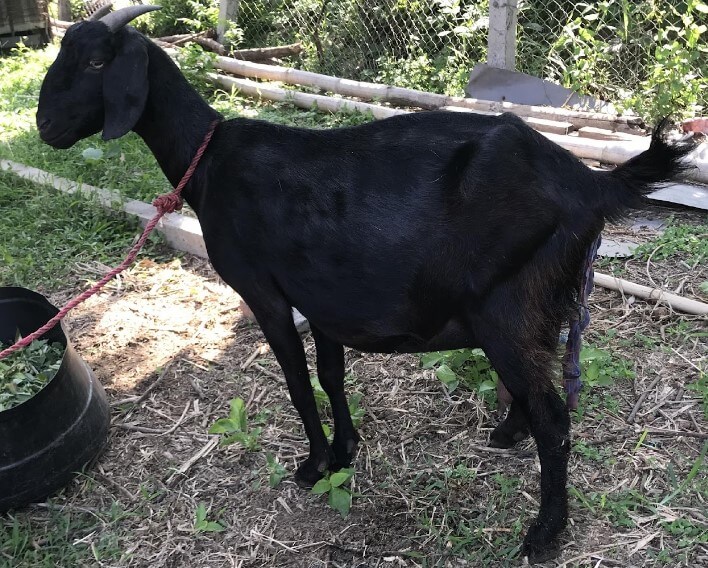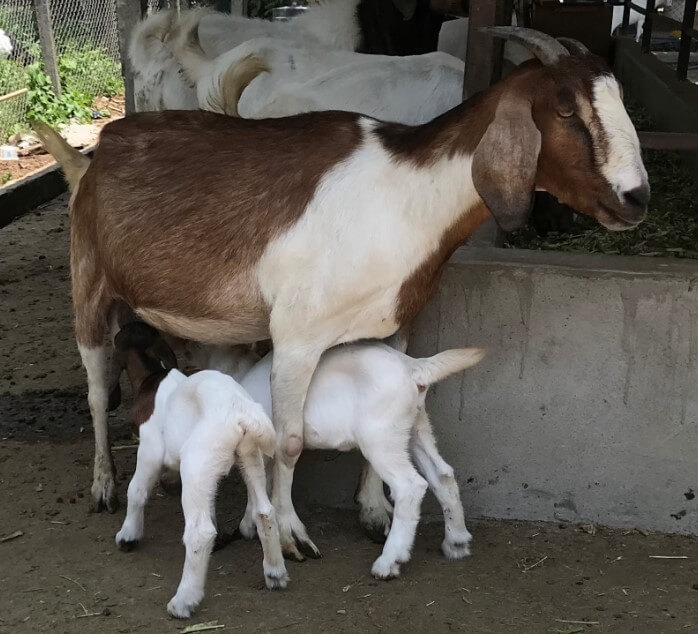
Dr. Memon is a Professor Emeritus at Washington State University and Vice President for Livestock at We-Empower, a US based NGO, focusing on food security, gender equality and equity, livelihoods, and One Health.
Dr. Mushtaq Memon is a Fulbright Specialist and his latest assignment in June 2022, was to assist the Veterinary Faculty at Agriculture & Forestry University Rampur, Chitwan, Nepal.
Overview of the Goat sector in Nepal
Goat meat (commonly called mutton in Nepal and the Indian subcontinent) is a common menu item in restaurants and on dining tables of Nepali homes. Although most Nepalis are Hindus and thus vegetarians, many people enjoy eating mutton. Goats are also sacrificed during various Hindu religious festivities, e.g., Dashain.
During these celebrations, goats are usually in short supply and are imported from next door India. There is an open border between India and Nepal and visas are not required for Indians or Nepalis to visit each other’s countries, therefore goat traders from India sell goats in Nepali markets.

Fig. 1 Mutton eaten in a Nepali home
Local goat breeds (Fig 2.) have been the main source of mutton. The native goat breeds have distinct advantages of adaptability to local conditions, including resistance to certain diseases, parasites and the ability to survive with limited nutrition. Based upon these merits, these animals are important for the food security of the country. However, with smaller size and slow body weight gain, cross breeding with exotic breeds especially Boer goat (Fig 3) has gained popularity.

Fig 2. Local goat breed

Fig 3. Crossbred goat

Fig 2. Local goat breed

Fig 3. Crossbred goat
Goat nutrition and management :
Chopped Sudan grass (Fig. 4) is commonly used during summer as roughage supplemented with a protein source, such as wheat bran, mustard oil cake and salt in drinking water (Fig. 5).

Fig. 4 Chopped Sudan Grass

Fig 5 Protein supplement in water
Parasite control by anthelmintics, vaccinations to prevent common diseases and regular feet trimming etc. are practiced by the most progressive Goat farmers (Fig. 6) in the country, but these practices are not widespread . Increasing body weight is the goal, therefore the does (female goats) are not milked.
Traditionally, goat milk or milk products are not consumed by Nepalis. Even though many does, especially cross-bred have well developed udder (Fig. 7), the kids (baby goats) are allowed to consume all the milk (Fig 8).

Fig. 6 Prof. Memon with Mr. Buddhi Bahadur Gurung, owner of a private goat farm

Fig.7 Well developed udder
Breeding: Most of the goats in Nepal are bred by ‘natural breeding’ between doe and the buck (male goat). As mentioned earlier, Boer bucks are imported for cross breeding with native breed does. The Boer goat, originally from South Africa, is probably the most well-known meat breed in the world. Australia and some other countries have well developed Boer goat industries and many Boer bucks in Nepal are imported from Australia.
Fig. 8 Nursing kids
Artificial insemination (AI): The use of AI can reduce sexually transmitted diseases, decrease the cost and labor of keeping multiple breeding bucks and increasing the number of does that can be bred with imported Boer males. The use of Boer semen in local breeds is practiced by goat farmers but no reliable results regarding conception rates from AI are available.
AI involves collection of semen from a buck with artificial vagina (AV) (Fig. 9). The AV provides the appropriate temperature, pressure, and lubrication for a buck to experience a similar environment as in natural breeding. Of course, the buck must be trained to use the AV. A ’teaser’ female which is in estrus must be present to excite the buck to have penile erection and ejaculation in the AV (Fig 10).
Fig.9 AV for semen collection Fig. 10 Boar being stimulated by a doe in estrus

Semen collected with AV is evaluated for sperm motility (sperm moving in forward/progressive manner) and morphology (normal vs abnormal) to make sure the semen sample is of desirable quality, e.g., sperm motility and morphology ≥80% evaluated under microscope. These and other important tests, e.g, Scrotal circumference measurement (Fig. 11) are a part of Breeding Soundness Examination of a male. Once the animal is declared a Satisfactory Potential Breeder, the semen sample is mixed with an extender that will allow the sperm to survive during storage. A buck will ejaculate about 2ml semen which, when mixed with the extender equals about 10ml, is enough to inseminate about 100 does. Of course, many other details about temperature control, proper hygiene during the semen collection and processing are very important and can affect the viability of the semen
Fig. 11 Measuring scrotal circumference
The extended semen can be used immediately or frozen The frozen semen must be stored in liquid nitrogen (Fig. 12) all the time, until it is taken out from the storage tank to thaw and inseminate the doe. The semen freezing technologies are very well established and frozen livestock semen if properly processed and stored can be used for AI for many years.
In Nepal, the National Livestock Breeding Office http://nlbo.gov.np/home/ houses pure-bred Boer bucks, collects/freezes semen, and distributes the frozen buck semen through a network of AI technicians.
Fig. 12 Semen storage
Conclusion: Goat production has a bright future in Nepal. Large numbers of goats imported from India, especially during religious/traditional festivities, indicate that the market can absorb all the goats Nepali farmers can produce. Cross breeding between local goat breeds with imported Boer bucks has shown promise in weight gains of the offspring
of the cross bred does. Natural breeding is the common practice, but artificial insemination (AI) is being promoted for health and increased body growth. Education and hands-on training in goat management, nutrition, and reproduction are essential for the future growth of the goat industry in Nepal.
